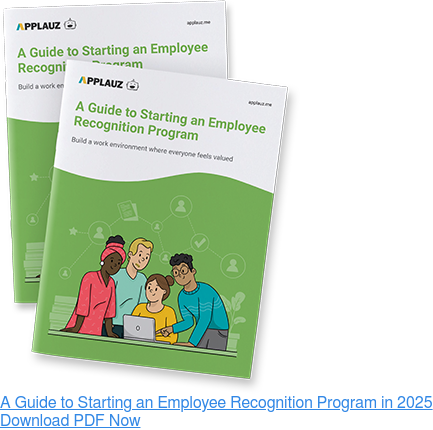Picture this: standing in front of a group of your peers and superiors, about to give a presentation. How do you feel?
Probably a bit fearful, sweaty, and even a bit shaky. Your heart is racing faster than usual. You might even feel an intense urge to use the restroom.
These uncomfortable sensations actually push you to perform better. The right amount of stress helps you “fight” through the experience so that you -- hopefully, don’t embarrass yourself and deliver a successful presentation.
In our ancestral past, this stress response presented a survival advantage. In other words, it helped keep us alive. For example, in the event of a predator's unwelcome appearance, like, let’s say, a large mammal.
An adaptive response gone awry
In modern times, flesh-hungry predators don't come charging into our offices -- thankfully. But perceived threats still exist everywhere; they just take a different form.
For instance -- public speaking, deadlines, traffic, busy offices, a difficult coworker, quotas, bills, and other modern life factors.
These modern stressors aren't a genuine threat to our life. For example, although it might feel nerve-wracking to deliver a public presentation, it's not going to kill you. But our nervous system is still programmed to respond as if it is, ultimately causing a great deal of anxiety for many people.
But what makes modern stressors so harmful is that they are everywhere.
Consequently, if our reactions to stressors aren't correctly managed, our nervous systems become activated regularly. What's worse, they rarely have a chance to quiet down. As a result, bodily stress becomes chronic.
Naturally, being in a heightened state of physiological alertness is not sustainable. It wears on all our biological systems over time. Slowly, the harmful impact of chronic stress begins to manifest itself. As a result, you may experience:
- Muscle pain and tension
- Fatigue and exhaustion
- Sleeping difficulties
- Headaches
- Jaw clenching
- Brain fog and difficulty concentrating
- Stomach and digestive issues
- Chest tightness and pain
You would be hard-pressed to find a modern worker that doesn’t experience at least one of the ailments listed. This hard truth means that chronic stress is not just a problem but an epidemic.
Also, burnout rates are skyrocketing, suggesting that -- for many people -- the workplace is a primary source of stress.
 Burnout: A State of Chronic Stress
Burnout: A State of Chronic Stress
According to the World Health Organization, burnout results from "chronic workplace stress that has not been successfully managed."
Burnout expresses itself both physically and mentally. The physical symptoms of burnout are the ones described above. But most importantly, the mind and psychology of an individual also take a toll. This creates and reinforces a vicious circle.
For instance, mental symptoms of burnout manifest as negative and cynical thinking. Employees are more irritable and feel more on edge. This experience provokes feelings of pessimism and detachment from their work.
Eventually, feelings of apathy and hopelessness set in. Understandably, employees experiencing this level of burnout are unable to perform adequately. And productivity and quality of work take a massive toll.
When it's too late to treat burnout
In an HRB article titled, Beyond Burned Out, author and workplace expert Jennifer Moss discusses the epidemic of burnout.
Moss contends that burnout is rampant, and companies are attacking the problem of burnout from the wrong angle. Most importantly, they are intervening when it’s already too late.
Moss insists, standard interventions for burnout and workplace stress completely miss the mark.
For example, many businesses view self-care as the cure for burnout -- offering more yoga classes and meditation apps. Although these activities can be helpful to improve well-being, they are not the cure for burnout.
“We desperately need upstream interventions, not downstream tactics,” she affirms.
As a case in point, if you consider the root causes of burnout, burnout stems from harmful norms and issues within the organization rather than being a fault in the individual.
- Excessive workload
- Job demands that exceed job resources
- Juggling roles between work and home
- Toxic organizational cultures
- Workplace conflict
- Lack of job control
- Unclear job expectations
- Lack of support & recognition
 Preventing Burnout: A Collaborative Effort
Preventing Burnout: A Collaborative Effort
When you observe the common causes of burnout, it becomes clear that there isn’t one individual or group responsible for preventing burnout. It’s a group effort.
Managers, human resources, company executives, and the employee themselves are responsible for building a healthy and safe work environment. Each group plays an important role.
First off, managers are the day-to-day buffers against burnout. They help employees manage stress by being available for support, listening, and making adjustments where they can. As a case in point, having an empathetic manager has been shown to decrease instances of burnout. According to Gallup, employees whose manager is always willing to listen to their work-related problems are 62% less likely to be burned out.
On the other hand, HR also plays a role in preventing burnout. These interventions involve company-wide initiatives that have a long-term impact on an organization, such as implementing a recognition program or institutionalizing mental health and burnout training for managers.
Let’s explore these ideas in more detail and look at some practical examples of how HR and Managers can work together to prevent employee burnout.
How managers can prevent burnout
Gather regular feedback through 1:1 meetings: The first line of defence against burnout is regular communication with employees. For example, asking them openly and honestly about how work is going and what gives them excessive amounts of stress. As a result, you can take the feedback and make changes where it’s in your control. Of course, you can’t eliminate all stress for everybody; that’s not a realistic goal. But taking steps to minimize unnecessary stress where you can go a long way to keep that stress response under control, and ultimately, keep the risk of burnout low.
Adjust workload and deadlines accordingly: One of the most critical risk factors for burnout is an unmanageable workload. For instance, research from Gallup has shown that the risk of burnout increases when an employee’s workweek averages more than 50 hours. As such, managers should work with their teams and their supervisors to find the sweet spot. These efforts will go a long way towards keeping stress at a manageable level and keeping burnout at bay.
Offer some level of flexibility: Lack of work/life balance is cited as the top reason for burnout, especially during the COVID pandemic. Women bear most of the burden of housework and childcare; a Mckinsey report affirms mothers are more than three times as likely as fathers to be responsible for most of the housework and caregiving during the pandemic. As a result, one in three mothers has considered leaving the workforce entirely or downshifting their careers. As a result, offering flexibility to ensure a healthy work-life balance has never been more critical.
Deal with interpersonal conflict quickly: It’s not a surprise: some people are more challenging to deal with. Yet, this is not an excuse for persistent interpersonal conflict at work. Conflict between team members can be a significant source of stress for employees. Managers should attempt to mediate and resolve the problem as quickly as possible. These problems tend to become ticking time bombs, and early intervention is vital.
Minimize screen time and meetings: We have all heard about Zoom burnout; you've probably experienced it yourself. Screen time and meeting fatigue is a chief complaint of remote workers and contributes to burnout. Minimizing screen time doesn't mean elimination. Instead, it's about being mindful of people's time. For example, managers can ask themselves if every meeting is necessary and keep meetings as brief as possible. Or this can also mean asking yourself if every attendee must be there.
Share decision-making power: A feeling of a lack of control over their work and decision making is a significant source of stress for employees and ultimately burnout. The solution to counteract this tendency is simple: Intentionally create space for employees to express their opinions. Asking an employee's opinion gives them a voice. It makes employees feel like their judgment and knowledge matter, which is invaluable in creating a sense of autonomy and decreasing the risk of burnout.
Offer sincere appreciation and recognition: Don't wait until formal evaluations to say thank you. Expressing your gratitude to your employee costs zero dollars and will go a long way. This is especially true if your expression of appreciation is spontaneous and specific to them. Did someone on your team go above and beyond and did a great job on a task? Let them know how much you appreciate -- not only the outcome of their work but the effort they put in.
Take care of yourself: It's no surprise: managers also get stretched thin and are stressed themselves. When a manager finds themselves overworked, it's even more difficult for them to be available to their team for support. Managing your team's daily stressors also means making sure you manage your stress and asking for help when you need it, so you can ultimately be there for your team when they need you.
How HR can prevent burnout
Burnout prevention for managers: It’s no surprise to any HR professional: ineffective management is often the leading cause of occupational burnout. According to a Gallup report, this isn’t always the manager’s fault, though. They are overworked and burnout themselves. As a result, preventing manager burnout is an essential step in preventing burnout in the rest of the organization.
Management training on burnout and mental illness: To that end, ensuring that managers are trained to detect early signs of burnout and intervene in an empathetic way is critical. According to a new report by Oracle, 68% of people would prefer to talk to a robot over their manager about stress and anxiety at work. These insights go against common intuition -- how can a robot be more empathetic than a human? This study suggests the mental health stigma still prevails in the workplace and how ill-equipped managers are in dealing with it.
Be transparent about the role expectations: Lack of role clarity and unclear job expectations are two significant causes of occupational burnout. Ensuring that a role's expectations are clear from the start is an important part of mitigating this common cause of burnout. Practically speaking, this means ensuring that recruiters and hiring managers are honest and transparent about the role's tasks and responsibilities, and they don't embellish them.
Wellness programs: Meditation apps and yoga aren't the cure for burnout. However, having these resources available in the workplace is a great way to help employees manage their day-to-day stress. Developing a wellness program that involves physical wellness activities and programs is an essential component towards the larger goal of preventing employee burnout.
Mental health support programs: It has become increasingly important that employees receive mental health support at work. This initiative can take many forms; for example, you can improve your company's health insurance coverage to include psychological service. Alternatively, this can mean building a mental health resource page that can be accessed for employees going through a difficult time.
Implementing a recognition program: Appreciation is fundamental to employee engagement and burnout prevention. That said, recognition programs can take many forms. For example, a length of service program intended to celebrate important work milestones. Or it can be a more modern recognition program that enables peer-to-peer recognition or a more spontaneous form of recognition. Ultimately, these programs help companies recognize employees with more visibility and frequency. The end goal is an engaged workforce.
Final Thoughts
Finally, it's worth noting employees themselves are responsible for managing their mental wellness, for example, by learning to respond in healthy ways to everyday stressors. This can involve learning mindfulness and stress reduction techniques that help manage their reactions to work pressure and stressful situations.
In other words, how an employee responds to a stressful event will always be in the employee's control.
But one factor that is always in the employer's control is the number of stressors in the workplace.
To that end, if a workplace is fundamentally unhealthy, plagued by unnecessary stressors and driven by harmful norms, even the most resilient workers will break down, and eventually, burn out.
About the author
 Michelle Cadieux
Michelle Cadieux
Michelle is a content writer for Applauz. She holds a Bachelor's degree in Psychology from Concordia University, and she has been writing about work and employee happiness for over five years.



